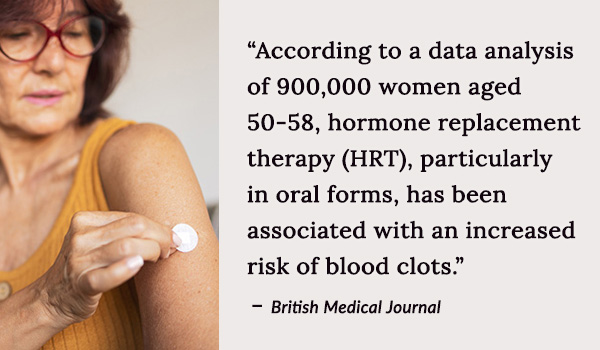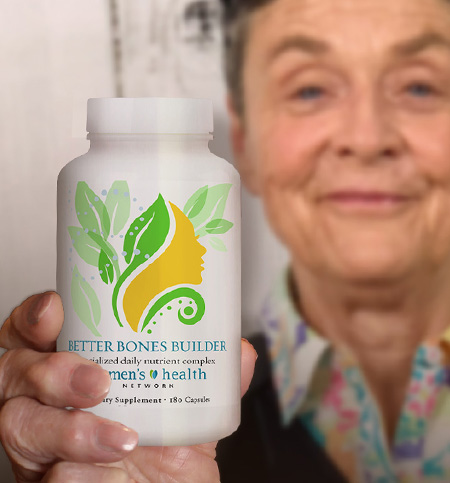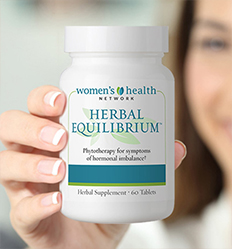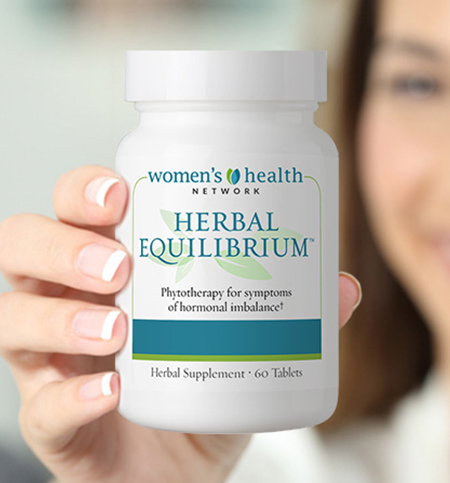Authored by Dr. Susan E. Brown, PhD
Women are at risk for excessive bone loss and osteoporosis during menopause. And this is why, for a long time, conventional medicine pushed the idea that since estrogen protects bone, a good way to protect women from menopausal osteoporosis was to “replace” the estrogen they’d lost with hormone replacement therapy (HRT).

Taking synthetic hormone replacement therapy (HRT) for osteoporosis even came with the bonus of reducing hot flashes and other symptoms.
Sounds great, right?
Well, like almost everything about how our complex and wonderful bodies work, it’s not that simple. Using synthetic estrogen HRT as a way to fight osteoporosis comes with a lot of unintended and downright dangerous consequences. So many, in fact, that the FDA no longer recommends it as a first-line solution for menopausal osteoporosis. Still, despite this warning, some doctors still prescribe HRT for osteoporosis.
Is your conventional doctor recommending HRT for menopausal or postmenopausal bone loss? You deserve to know why this advice is outdated, and even worse, why it’s dead wrong.
Estrogen’s pros come with some very big cons
Most of us know estrogen as a reproductive hormone. And there’s no question that it serves an important role in that system. But there are estrogen receptors throughout the body in tissues including the skin, heart and cardiovascular system, and brain. It’s important in cholesterol production, temperature regulation and skin thickness (which is part of why menopause can mean hot flashes and thinner skin in women). Its impact isn’t just limited to women’s reproductive tracts — it has roles in many different body systems, including the skeleton.
Estrogen has important effects on two bone-related pathways, RANKL and OPG. It directly reduces the expression of RANKL. By doing so it suppresses osteoclasts (thus slowing bone breakdown). While at the same time it increases secretion of OPG (which further reduces RANKL). This means estrogen is fundamentally bone-conserving — it works to limit bone breakdown.
Thus, it’s true that taking HRT for osteoporosis comprised of synthetic estrogens, with or without progestins, during or after menopause is likely to slow or stop bone loss.
But that protection comes at a price many women may not want to pay.
Studies have shown that women who took HRT had a 44% lower risk of vertebral fracture. They also had a 27% lower risk of nonvertebral fractures (excluding fractures of the hip, for which there is no benefit). But the flip side of that finding is the much higher risk of blood clots. This can predispose women to life-threatening problems like stroke, pulmonary embolism or cardiovascular events, including heart attacks.
The Endocrine Society’s 2010 review of the risks and benefits of menopausal estrogen therapy found a 2-fold increase in thromboembolism risk. But it also noted that this risk “is multiplicative with baseline risk factors including age, higher body mass index, thrombophilias, surgery and immobilization.” In plain English, that means that using HRT increases your risk of thromboembolism by 200% or more. The additional increase is depending on your other risk factors (age and excess body weight are two biggies).
So the end result is that if you take HRT the risk of vertebral fractures is cut almost in half. And the risk of nonvertebral fractures is reduced by about a quarter. There is no benefit whatsoever respecting hip fractures, which are among the most dangerous kind. But you more than double your risk of a deep venous thrombosis, pulmonary embolus or stroke.
Then there’s the concern around HRT and breast cancer. This originated in the Women’s Health Initiative study, in which two hormone therapy trials looked at estrogen therapy by itself versus combined estrogen-progestin therapy (both versus placebo) in approximately 27,000 women who were about a decade past the average age of menopause. This study not only found HRT use to be associated with the cardiovascular risks I’ve already mentioned, but also with an increased risk of breast cancer.
It’s notable that the further away you get from menopause, the higher the risk of both cardiovascular disease and cancer become. So some organizations advocate using HRT only in women who just recently went through menopause. In general, though, when the purpose for using HRT is to protect bones and not to address menopausal symptoms like hot flashes, vaginal dryness and the like, most authorities are backing away from estrogen-centered therapy and advocating other avenues (mostly bone drugs, and that’s an entirely different discussion!).
In a nutshell, giving women estrogen at a time when their bodies are naturally winding down production of this hormone may slightly offset some bone-related losses, but it greatly increases the risk of other very serious health problems.
Menopause is a natural process — so let’s work with it
I’ve long been in awe of how our body systems work in concert to keep us healthy. And how they’ll continue working to restore our health if we support them. And this is the main problem with estrogen therapy for bone health: women in menopause aren’t “losing” estrogen. It’s decreasing because it no longer serves a need in the body’s systems.
When we’re in our reproductive years, estrogen has a key role in enabling our reproductive cycles. But Nature didn’t intend for us to produce offspring the way rabbits do! We have a limited capacity for reproduction, and when it’s over, our bodies no longer waste resources in supporting it — so away goes the estrogen. Menopause is a normal facet of our life cycles, the transition from the role of the nurturing “Mother” to the wise, knowledgeable “Crone,” as some pagan traditions describe it. Throwing more estrogen into the mix when we’re supposed to be easing back on it works against Nature. So it shouldn’t be surprising that we get a bunch of unintended and pretty serious consequences.
Instead, we might do better to work with Nature and to support our bodies during and after the menopause transition. Then we don’t have to rob those ever-gracious givers — our bones — of the nutrients we need to cushion other systems that rely on estrogen, too.
Barrionuevo P, Kapoor E, Asi N, et al. Efficacy of pharmacological therapies for the prevention of fractures in postmenopausal women: a network meta-analysis. J Clin Endocrinol Metab. 2019;104(5):1623–1630.
Boyce BF, Xing L. Functions of RANKL/RANK/OPG in bone modeling and remodeling. Arch Biochem Biophys. 2008 May 15; 473(2): 139–146.
Chen L-R, Ko N-Y, Chen K-H. Medical Treatment for Osteoporosis: From Molecular to Clinical Opinions. Int J Mol Sci. 2019 May; 20(9): 2213.
Martin KA, Barbieri RL. Menopausal hormone therapy: Benefits and risks. UpToDate (Aug 29, 2019). https://www.uptodate.com/contents/menopausal-hormone-therapy-benefits-and-risks.
Santen RJ, Allred DC, Ardoin SP, et al.; Endocrine Society. Postmenopausal hormone therapy: an Endocrine Society scientific statement. J Clin Endocrinol Metab . 2010;95(7 Suppl 1):s1–s66.











